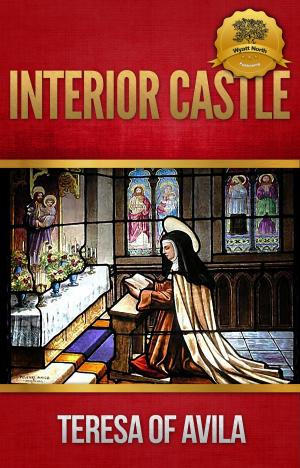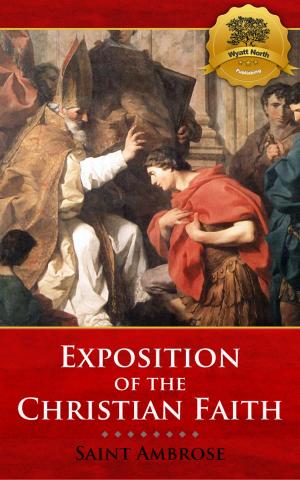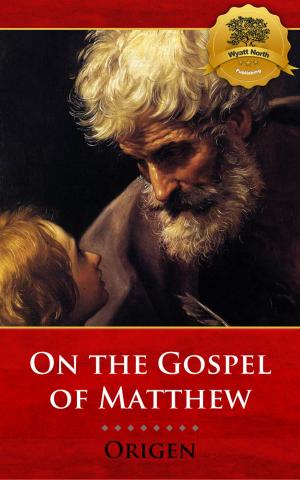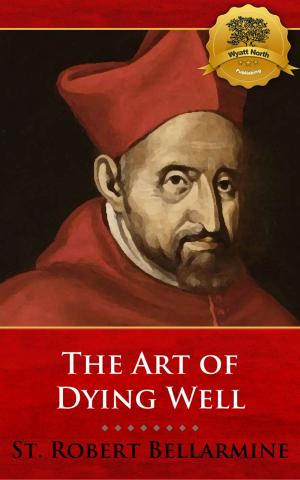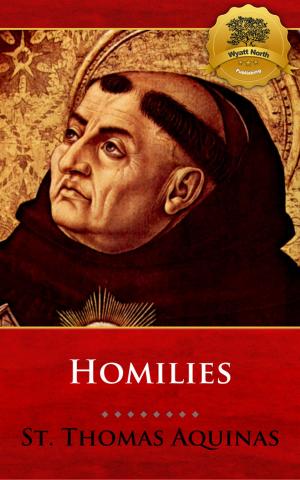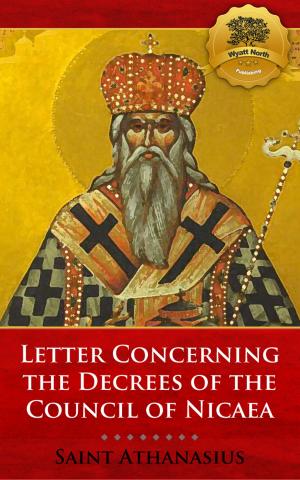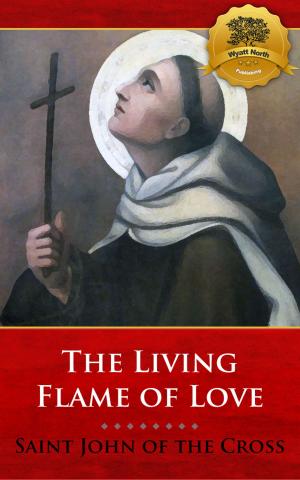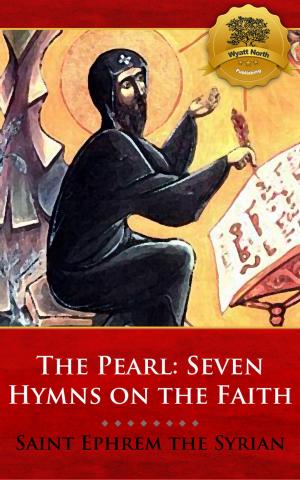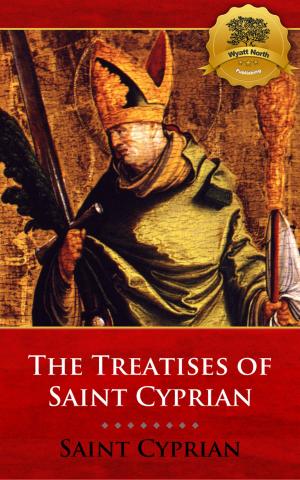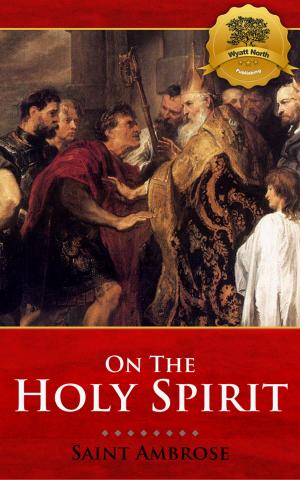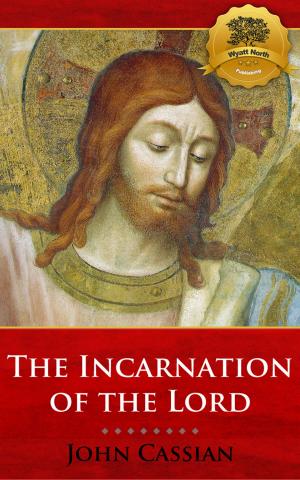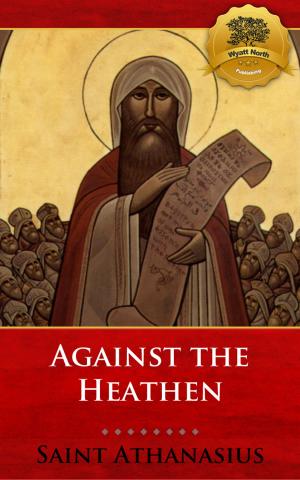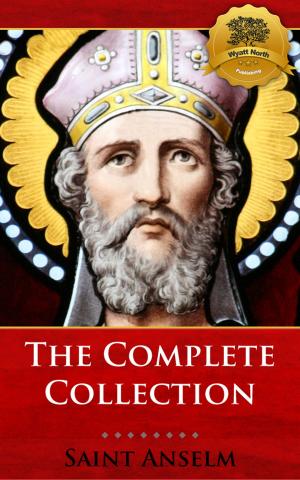Saint Dominic and the Order of Preachers
Nonfiction, Reference & Language, Reference, Research, Religion & Spirituality, Christianity, Denominations, Catholic, Catholicism, Christian Life| Author: | VERY REV. J. B. O'Connor, Wyatt North | ISBN: | 9781622780792 |
| Publisher: | Wyatt North Publishing, LLC | Publication: | March 30, 2012 |
| Imprint: | Language: | English |
| Author: | VERY REV. J. B. O'Connor, Wyatt North |
| ISBN: | 9781622780792 |
| Publisher: | Wyatt North Publishing, LLC |
| Publication: | March 30, 2012 |
| Imprint: | |
| Language: | English |
This book comes complete with a Touch-or-Click Table of Contents, divided by each section.Like his contemporary, Francis of Assisi, Dominic saw the need for a new type of organization, and the quick growth of the Dominicans and Franciscans during their first century of existence confirms that the orders of mendicant friars met a need.He had accompanied as canon Diego de Acebo, Bishop of Osma on a diplomatic mission to Denmark, to arrange the marriage between the son of King Alfonso VIII of Castile and a niece of King Valdemar II of Denmark. At that time the south of France was the stronghold of the Cathar or Albigensian heresy, named after the Duke of Albi, a Cathar sympathiser and opponent to the subsequent Albigensian Crusade (12091229).This gnostic doctrine held that matter was evil and only spirit was good, a fundamental challenge to the notion of incarnation, central to Roman Catholic theology. The This book comes complete with a Touch-or-Click Table of Contents, divided by each section.Like his contemporary, Francis of Assisi, Dominic saw the need for a new type of organization, and the quick growth of the Dominicans and Franciscans during their first century of existence confirms that the orders of mendicant friars met a need.He had accompanied as canon Diego de Acebo, Bishop of Osma on a diplomatic mission to Denmark, to arrange the marriage between the son of King Alfonso VIII of Castile and a niece of King Valdemar II of Denmark. At that time the south of France was the stronghold of the Cathar or Albigensian heresy, named after the Duke of Albi, a Cathar sympathiser and opponent to the subsequent Albigensian Crusade (12091229).This gnostic doctrine held that matter was evil and only spirit was good, a fundamental challenge to the notion of incarnation, central to Roman Catholic theology. The Albigensians, more commonly known as the Cathars (a heretical gnostic sect), lived very simply and saw themselves as more fervent followers of the poor Christ. Dominic saw the need for a response that would attempt to sway members of the Albigensian movement back to mainstream Christian thought. The mendicant preacher emerged from this insight. Dominic's desire of winning the Albigensians over by persuasion did not succeed, and the Occitan area was devastated in the Albigensian crusade.Dominic became the spiritual father to several Albigensian women he had reconciled to the faith, and in 1206 he established them in a convent in Prouille. This convent would become the foundation of the Dominican nuns, thus making the Dominican nuns older than the Dominican friars.Dominic sought to establish a new kind of order, one that would bring the dedication and systematic education of the older monastic orders like the Benedictines to bear on the religious problems of the burgeoning population of cities, but with more organizational flexibility than either monastic orders or the secular clergy. Dominic's new order was to be a preaching order, trained to preach in the vernacular languages. Rather than earning their living on vast farms as the monasteries had done, the new friars would survive by begging, "selling" themselves through persuasive preaching.The Order's origins in battling heterodoxy influenced its later development and reputation. Many later Dominicans battled heresy as part of their apostolate. Indeed, many years after St. Dominic reacted to the Cathars, the first Grand Inquistor of Spain, Tomás de Torquemada, would be drawn from the Dominican order.You can buy other wonderful religious books from Wyatt North Publishing! Enjoy.
This book comes complete with a Touch-or-Click Table of Contents, divided by each section.Like his contemporary, Francis of Assisi, Dominic saw the need for a new type of organization, and the quick growth of the Dominicans and Franciscans during their first century of existence confirms that the orders of mendicant friars met a need.He had accompanied as canon Diego de Acebo, Bishop of Osma on a diplomatic mission to Denmark, to arrange the marriage between the son of King Alfonso VIII of Castile and a niece of King Valdemar II of Denmark. At that time the south of France was the stronghold of the Cathar or Albigensian heresy, named after the Duke of Albi, a Cathar sympathiser and opponent to the subsequent Albigensian Crusade (12091229).This gnostic doctrine held that matter was evil and only spirit was good, a fundamental challenge to the notion of incarnation, central to Roman Catholic theology. The This book comes complete with a Touch-or-Click Table of Contents, divided by each section.Like his contemporary, Francis of Assisi, Dominic saw the need for a new type of organization, and the quick growth of the Dominicans and Franciscans during their first century of existence confirms that the orders of mendicant friars met a need.He had accompanied as canon Diego de Acebo, Bishop of Osma on a diplomatic mission to Denmark, to arrange the marriage between the son of King Alfonso VIII of Castile and a niece of King Valdemar II of Denmark. At that time the south of France was the stronghold of the Cathar or Albigensian heresy, named after the Duke of Albi, a Cathar sympathiser and opponent to the subsequent Albigensian Crusade (12091229).This gnostic doctrine held that matter was evil and only spirit was good, a fundamental challenge to the notion of incarnation, central to Roman Catholic theology. The Albigensians, more commonly known as the Cathars (a heretical gnostic sect), lived very simply and saw themselves as more fervent followers of the poor Christ. Dominic saw the need for a response that would attempt to sway members of the Albigensian movement back to mainstream Christian thought. The mendicant preacher emerged from this insight. Dominic's desire of winning the Albigensians over by persuasion did not succeed, and the Occitan area was devastated in the Albigensian crusade.Dominic became the spiritual father to several Albigensian women he had reconciled to the faith, and in 1206 he established them in a convent in Prouille. This convent would become the foundation of the Dominican nuns, thus making the Dominican nuns older than the Dominican friars.Dominic sought to establish a new kind of order, one that would bring the dedication and systematic education of the older monastic orders like the Benedictines to bear on the religious problems of the burgeoning population of cities, but with more organizational flexibility than either monastic orders or the secular clergy. Dominic's new order was to be a preaching order, trained to preach in the vernacular languages. Rather than earning their living on vast farms as the monasteries had done, the new friars would survive by begging, "selling" themselves through persuasive preaching.The Order's origins in battling heterodoxy influenced its later development and reputation. Many later Dominicans battled heresy as part of their apostolate. Indeed, many years after St. Dominic reacted to the Cathars, the first Grand Inquistor of Spain, Tomás de Torquemada, would be drawn from the Dominican order.You can buy other wonderful religious books from Wyatt North Publishing! Enjoy.

